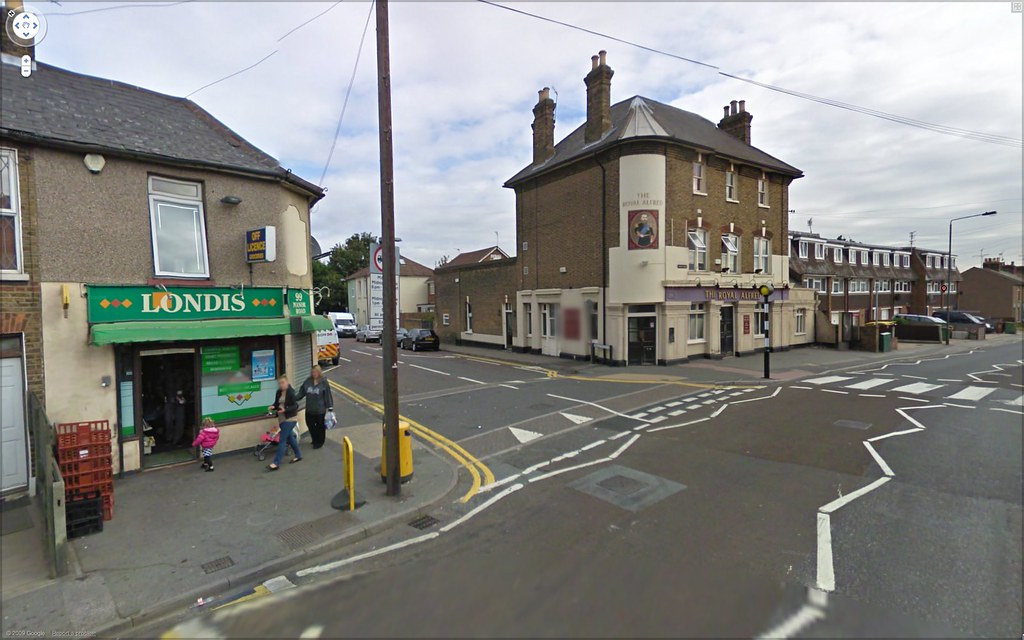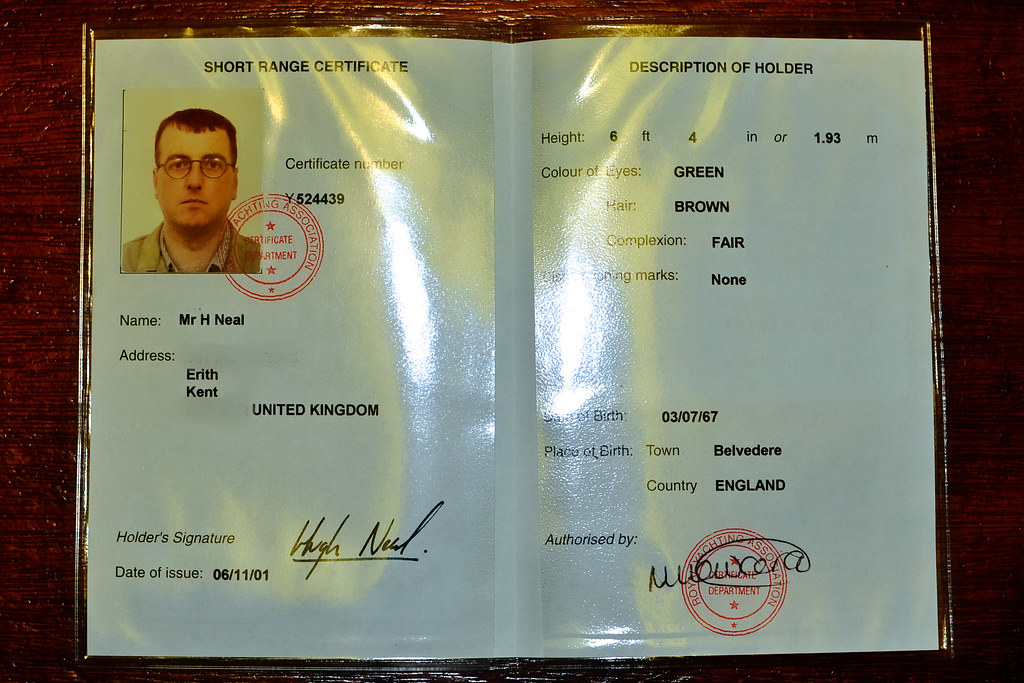
I see that Bexley College are looking to close the Redcliffe nursery on the Tower Road site in Erith in an attempt to cut back 19% on their budget. The college intends to concentrate on their core activities, which include providing further education to local 16 - 19 year olds. Strong local rumour has it that they are looking for a buyer for the entire Tower Road site, and that a property developer is contemplating turning the main college tower block into residential apartments. I know that Bexley College have a plan to relocate to Bexleyheath, and the centre of the borough, as they regard Erith as being too marginal and "out in the sticks". Time will tell no doubt.
I was out and about in Erith at 8.30 this morning; one thing that very much was brought to my attention is that nothing in the town happens before 10am - Erith is effectively dead before 10 on Sundays.
I recall as a kid, being absolutely fascinated with radio in all its' forms, something that has lasted to this day. Now I hold an advanced class Amateur Radio licence, as well as a marine VHF radio licence, (see the photo below) in addition to having worked for the largest offshore radio station in the world, back in the day. My first real spark of interest was kindled by the launch of UK citizen's band radio. It was a pale and weedy relation to the long established and exceedingly popular American version. CB was enthusiastically embraced by people in all walks of life. It led to CB clubs forming throughout the land, which were mostly in competition with each other for ideas and members. In some areas, committees were formed from representatives of individual clubs to try to avoid popular activities from clashing. Club activities often included the normal social activities of any clubs, such as meals, coach trips, quizzes, raffles, treasure hunts and CB-related events like 'fox-hunts'. They often collapsed through financial short-comings (often fraudulent), fall-outs or just a general decline in interest but some of them were well run and outlasted the decade of the 1980s. Many of these clubs sowed the seeds of long-lasting friendships, marriages and divorces. They were important centres for the CB sub-culture that was a noticeable feature of the 1980s, although many did not last for long. The cause of legalisation and the community spirit of beating "smokey" and not getting "busted" was very strong. CBers adopted the ten-code and much of the incumbent US slang, but this rapidly evolved into a distinctly English slang. New ten-codes were frequently made up, used for a while in the local area, then fell into disuse. For example, a "10-100" was often used to refer to a need to go to the toilet. Most of the official ten-code was ignored, except for basic ones such as 10-4, 10-20 and 10-9, which had mutated into "Give us a nine" (repeat the message). A weak signal was '10-1'. Everyone was required to have a "handle" - using proper names was definitely out. In addition, at one time the use of slang terms for the most everyday things was considered virtually compulsory. Another typical aspect of the UK CB culture was the low-level of paranoia that accompanied every conversation in light of the fact it was breaking the law. It was forbidden to disclose ones location (or "twenty", after the ten-code), but it was OK to give clues in a semi-cryptic form. Presumably any eavesdropper had the same chance of solving these as the intended listener, so the value of this was moot.
I must admit that I was pleasantly surprised by the good turn out for the election this time around. As I came out of the polling station (an enchantingly quaint portacabin parked in a side road near Pewty Acres) I was accosted by a man with a wireless microphone, who was standing next to a open topped double decker campaign bus. He thrust the microphone in my face and asked "I trust that we can depend on your vote?" To which I replied in no uncertain terms "What the F*ck has it got to do with you? It is a secret ballot!" I think he got the point, as did the couple of dozen other voters in the vicinity of the extremely loud bus PA system.

A story came up this week that even most of the UK and international technical press failed to pick up on; NASA has spectacularly and successfully tested the launch abort system - the ejector seat, as it were - for its new Orion crew space capsule. There's just one problem: according to President Obama's stated plans, Orion will never be launched with crew aboard. The Pad Abort 1 test took place on Thursday at the White Sands Missile Range at 2pm UK time, and it simulated what would occur in the event of an Orion crew needing to escape following a disastrous mishap to their rocket stack as it stood on the launch pad. In such a case, the Pad Abort rocket system fitted above the nose of the astronauts' capsule is triggered, pulling the capsule up off the failed, perhaps exploding launch stack almost instantly. The Abort rocket is exerting approximately 250 tonnes of thrust within "a fraction of a second" of being triggered, according to NASA, accelerating from 0 to 600 mph in two seconds, with the capsule dragged behind it within a cone of flame from the exhausts (what G-forces must the crew have to suffer? - it sounds almost as dangerous as a fuel tank explosion). Once it has abruptly blasted clear of the stack, the abort rocket can steer itself in any direction using eight side-firing exhausts mounted at the top of the Abort system spike. After soaring free for approximately ten seconds, these are used to flip the flying capsule and spike end for end so that the capsule is descending to Earth with the Abort spike trailing. After twenty-one seconds, a further jettison motor fires and the Abort spike blasts clear of the capsule, which then descends by parachute bringing the crew in to a safe landing. If, as expected, the Abort system isn't required during launch and ascent, it is jettisoned once the Orion is in space. According to NASA, the rocket getaway spike is "a key element in NASA's continuing efforts to improve safety as the agency develops the next generation of spacecraft". The only snag with that is that President Obama has lately cancelled the Ares I rocket stack which was intended to lift a crewed Orion into space. He originally axed the Orion too, but later relented saying that it might be sent into space unmanned for attachment to the International Space Station (ISS), there to serve in place of the current Soyuz capsule as the station's lifeboat. The President has also said that an unspecified heavy-lift rocket to replace the similarly cancelled Ares V will be chosen in 2015 for the purpose of getting deep-space missions (that is, ones beyond the Earth-Moon system) into orbit. However, this will probably not be rated to carry astronauts, in order to reduce costs.
You can see a video of the test below - it is pretty spectacular stuff, though as I said, I think that if this was ever used for real, the acceleration would turn the crew into Passata. Let me know what you think by posting feedback below.
I am a guilty addict of classic car TV makeover show Wheeler Dealers. I know it is nothing more than a blokes version of the kind of daytime home makeover telly designed to appeal to the stay at home Mum, but neverthemess I love the programme. The whole concept of buying a basket case classic motor and getting it back on the road and making a small profit really appeals to me. The double episode featuring the Bentley Mulsanne Turbo is one of my current favourite pieces of television - I just wish I had known about it during production - I would have snapped up the finished car!
Anyway, onto more pressing matters; here is a short docmentary on the formation of seminal hair metal band Steel Panther, from the makers of the television documentary series "Behind the Music" - beware there is savoury language!
No comments:
Post a Comment